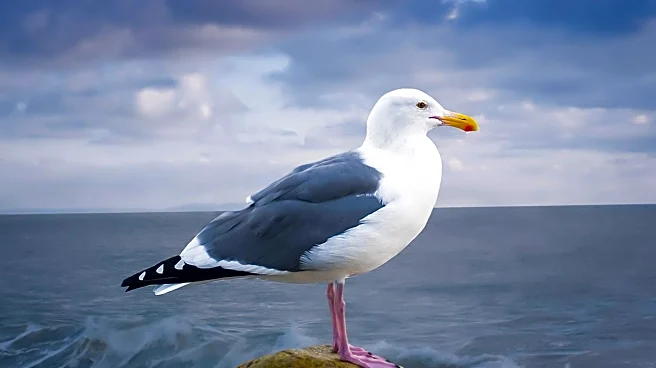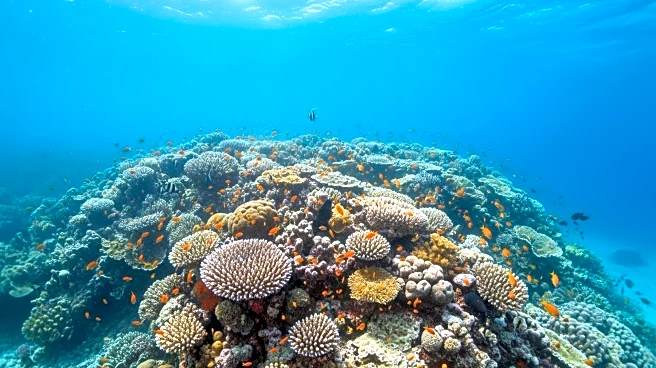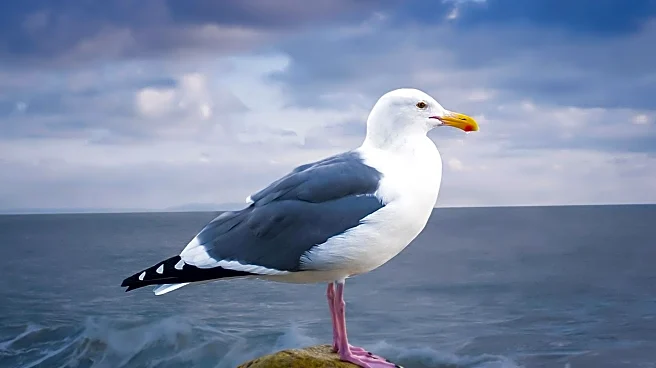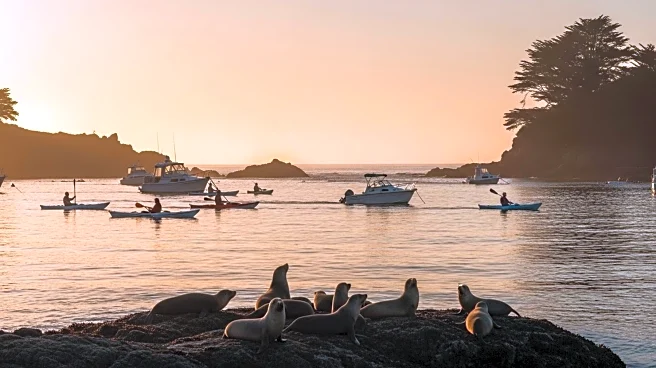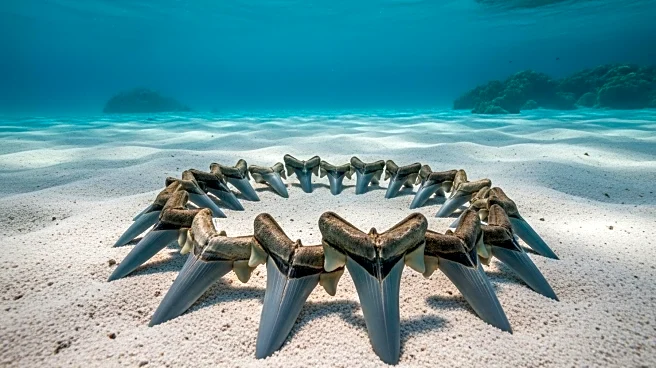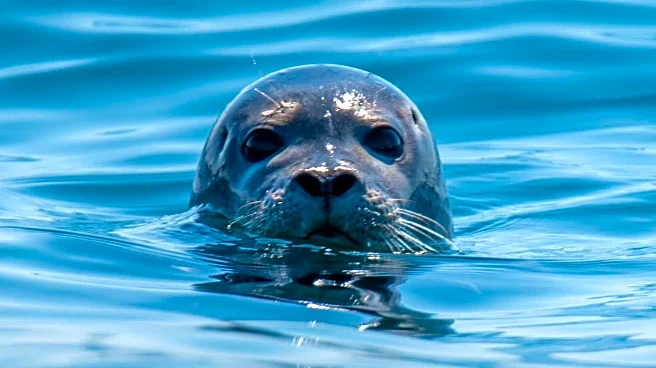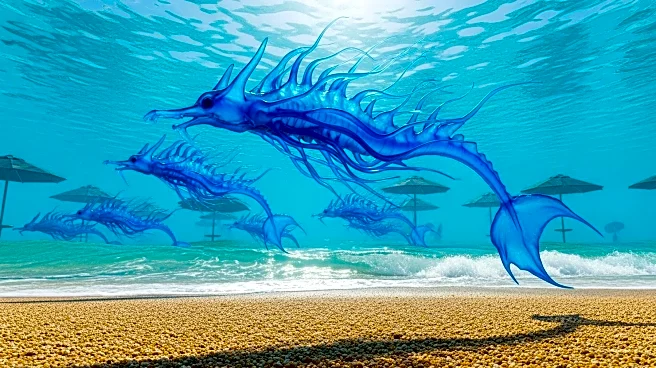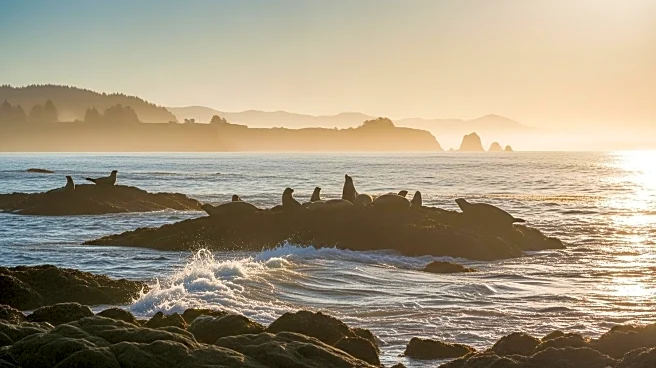What's Happening?
Conservation organizations, including the Manx Whale and Dolphin Watch (MWDW), Manx Wildlife Trust (MWT), and the Department for Environment, Food and Agriculture, have released a new set of guidelines aimed at promoting responsible behavior around marine wildlife in the Isle of Man. The guidance, available both online and in print, consolidates existing codes of conduct for interacting with various marine species such as whales, dolphins, porpoises, seals, basking sharks, and seabirds. The guidelines advise sea users to maintain a safe distance from marine life, with specific recommendations for boat users, kayakers, and drone operators. The initiative is designed to ensure that people can enjoy the rich marine biodiversity of the Isle of Man while minimizing disturbances to the animals.
Why It's Important?
The guidelines are crucial for protecting the diverse marine life around the Isle of Man, which is a significant ecological area. By educating the public on how to interact safely with marine animals, the initiative aims to reduce human-induced stress and potential harm to these species. This is particularly important as the region is a popular destination for marine wildlife enthusiasts, and improper interactions can lead to negative impacts on animal behavior and health. The guidelines also emphasize the importance of respecting the natural habitat of these creatures, which is essential for their conservation and the overall health of marine ecosystems.
What's Next?
The conservation groups plan to continue distributing the guidelines across the island and online, ensuring widespread access to the information. They may also engage in further educational campaigns to raise awareness about the importance of responsible wildlife observation. Additionally, feedback from the public and observations of marine life behavior may lead to updates or adjustments in the guidelines to better protect the animals and their habitats.
Beyond the Headlines
The initiative highlights the ethical responsibility of humans to coexist with wildlife without causing harm. It also underscores the need for ongoing conservation efforts and public education to preserve marine biodiversity. The guidelines serve as a model for other regions with similar ecological concerns, demonstrating how structured guidance can facilitate sustainable wildlife tourism and interaction.
